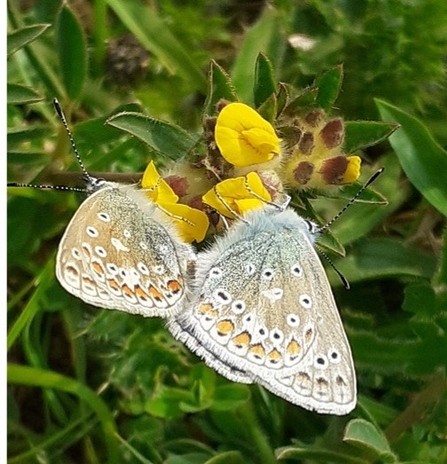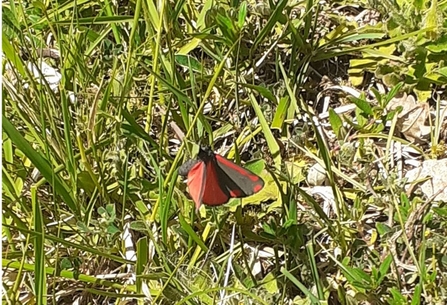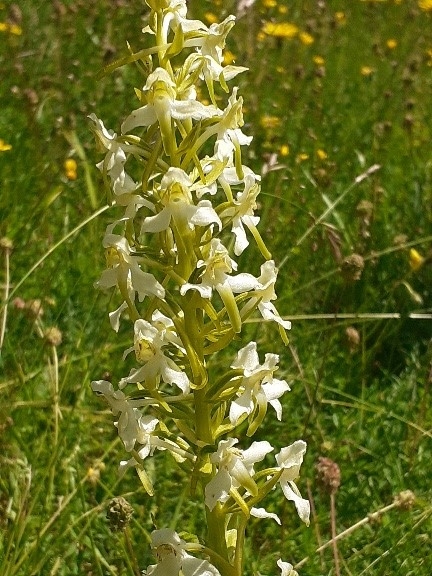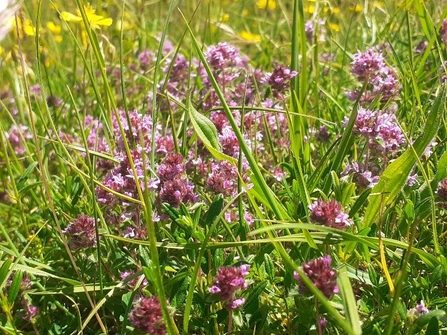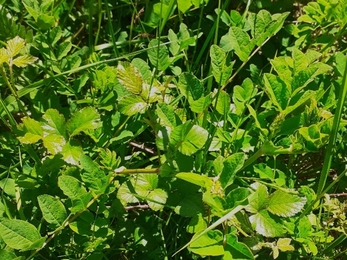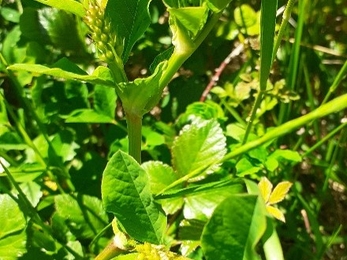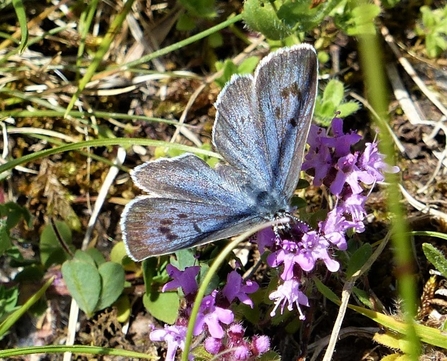You’ve arrived at Daneway Banks, the sun is shining, and you’ve come to find the large blue butterfly. As you walk around Daneway Banks, the excitement building, you come across a Large Blue Warden, one of our volunteers, who has the inside scoop on large blues at Daneway Banks and where to find them. You go up to talk with them and get the news you were hoping for, the large blues are out, and have been seen on the reserve today. With anticipation you make your way to where they have been spotted.
On your way, a flash of blue catches your eye, was that one? You follow it a little, peering through your binoculars until it lands on a yellow bird’s foot trefoil, focusing on you realize it’s a common blue, beautiful but not what you’re looking for.


